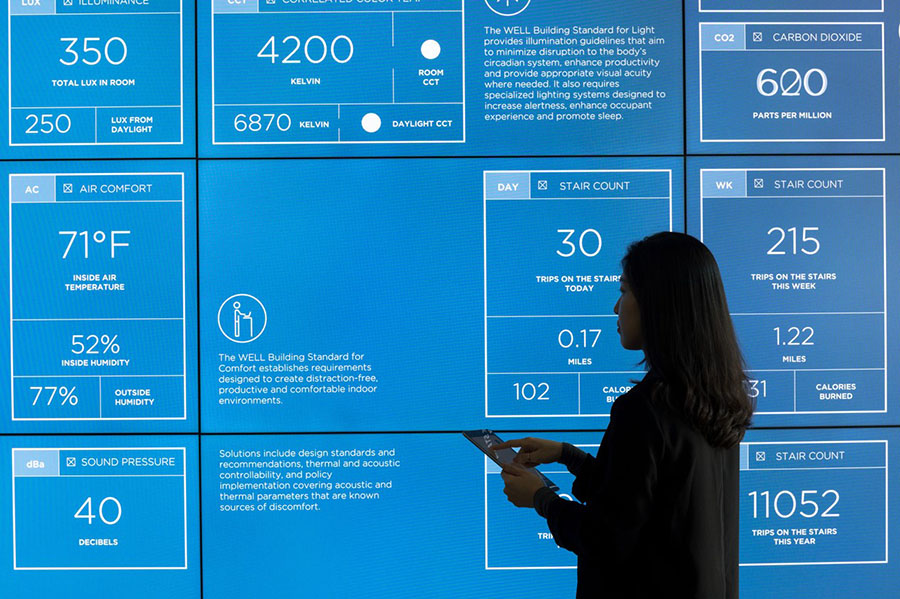
August 27, 2020
Architects and Designers Urge Action on Healthier Policy Priorities
Three recent initiatives outline how experts in the built environment are advocating for policy changes for public health and climate change.

In the wake of the pandemic, designers and architects are rethinking and inventing innovative solutions for nearly every sector of design from hospitality, restaurants, workplace experience, and landscape architecture. According to the World Health Organization, 19 percent of factors that affect our health and well-being are directly related to the built environment, making architects and designers key to protecting public health.
In light of a recent letter recognizing the possibility of airborne transmission of the virus, indoor air quality proves to be a top priority, but it is just one facet of the many ways the built environment affects public health.
Here are three recent initiatives that introduce new building standards and seek to change policy to help mitigate COVID-19 exposure and create healthier (and more sustainable) spaces during and after the current pandemic.
Built Environment Experts Petition to the WHO Urging Enhanced Guidance on the Role of Buildings in Addressing COVID-19

In a recent petition, more than 680 architects, engineers, and interior designers from over 50 countries have joined forces in a statement to Dr. Tedros Adhanom Ghebreyesus, director-general of the World Health Organization, urging the WHO to advance best practices in indoor environments to protect from the spread of COVID-19.
“If the WHO recommends best practice air standards now before vaccines and therapeutic solutions are available, it will have a strong effect towards raising the public’s awareness of places where they spend time,” the statement reads, noting that air pollution affects our most vulnerable populations.
So far, the petition has gained the signatures of the American Society of Heating, Refrigerating and Air-Conditioning Engineers (ASHRAE), the International WELL Building Institute (IWBI), and the World Green Building Council, to name a few. “We hope that this global call to action will demonstrate that our buildings, our businesses, and our communities can be at the frontlines of this fight if we deploy them wisely,” says Rachel Gutter, president, IWBI.
USGBC Creates New LEED Safety First Pilot Credits + Healthy Economy Commitment

Back in June, the U.S. Green Building Council released guidance to address the pandemic and support buildings with reopening strategies. Four new Safety First Pilot Credits outline best practices that are both sustainable and align with public health guidelines related to cleaning, re-occupancy, HVAC, and plumbing operations. The credits are a part of a USGBC strategy released in May titled, Healthy People in Healthy Places Equals a Healthy Economy.
“These new credits are a first step in helping the building and construction industry demonstrate its commitment to sustainable strategies as part of building a healthier, more resilient future,” said Mahesh Ramanujam, president & CEO of USGBC in a recent press release.
In addition to the credits, last week the USGBC released a Healthy Economy Commitment, urging public health officials and elected leaders to take action on green building policy priorities.

AIA Launches Policy Platform 2020
Earlier this month, the American Institute of Architects (AIA) launched the inaugural Policy Platform 2020 that serves as a statement on the organization’s policy priorities for U.S. presidential candidates and Congress. Embodying the idea of “Building a Healthy America,” the platform focuses on three key areas: Economy, Climate Action, and Healthy and Equitable Communities. Committing to zero carbon practices, rejoining and Paris Climate Accord, promoting toxin-free living in affordable housing, and strengthening water and air quality policy are just a few bullet points outlined in the statement.
“AIA supports strong and unequivocal policies that ensure that urgent climate change issues, including those that disproportionately impact communities of color, are immediately addressed,” stated AIA EVP and chief executive officer Robert Ivy, in an August 6th official press release.
You may also enjoy “Game Changers 2020: Diana Anderson and General Architecture Collaborative on Wellness and Community”
Would you like to comment on this article? Send your thoughts to: [email protected]
Register here for Metropolis Webinars
Connect with experts and design leaders on the most important conversations of the day.
Recent Viewpoints
Viewpoints
Sustainability News Updates for Q2 2025






